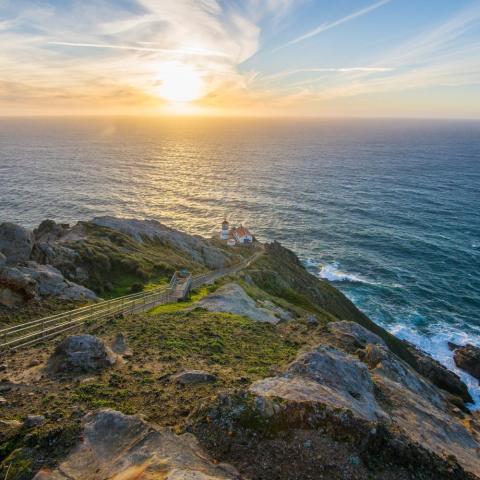
Drought conditions have prompted supplemental watering for tule elk at Point Reyes National Seashore/NPS file
Point Reyes National Seashore in California is providing supplemental water to the Tomales Point Tule Elk Reserve at the seashore in response to historic drought conditions. Although some natural water sources continue to be available, these sources may dry if this year becomes the worst drought on record for Marin County as expected, the seashore said Friday in a release.
Marin County declared a drought emergency mid-May with the lowest rainfall during the last 16 months in more than 140 years recorded by the Marin Municipal Water District.
The park has place three gravity-fed 250 gallon water troughs at the south end of the Tomales Point reserve based on areas of elk activity and adjacent to established water sources. The water troughs are fed by 2,000+ gallon tanks located along Pierce Point Road and will stay in place at least until rains return next winter. Water troughs have float valves to maintain constant water levels and escape ramps to prevent accidental drowning of smaller wildlife. Water will be supplied from water systems within and possibly outside of the park.
Tomales Point has both man-made cattle stock ponds and seeps, springs, and creeks distributed throughout the reserve. Both the man-made stock ponds and natural water sources are typically recharged by winter rains. With 2020-2021 winter rains at 40 percent of an average rainfall year, many of the stock ponds are already dry, and the seeps, springs, and creeks are dryer than usual.
Point Reyes National Seashore developed this project in consultation with the California Department of Fish and Wildlife and the Federated Indians of Graton Rancheria, and with support from the Marin Municipal Water District, which is supplying two of the water tanks.
Point Reyes National Seashore manages a fenced herd of tule elk at Tomales Point and two free-ranging herds in the Limantour and Drakes Beach areas. There are nearly 600 tule elk at in the park and approximately 6000 throughout California managed by the California Department of Fish and Wildlife. The National Park Service is committed to maintaining three healthy herds of tule elk at Point Reyes National Seashore.




 Support Essential Coverage of Essential Places
Support Essential Coverage of Essential Places







Comments
We elk activists and wildlife enthusiasts and National Park fans are thrilled the Park Service is finally doing what we've been begging them to do for 11 months - but we sure wish they'd acted sooner so 152 elk didn't have to die this last year (by the Park Service's) own count. Four times over 11 months activists brought in water -- which the Park Service promptly removed each time, claiming there was adequate water. The last water trough removal was just days before this announcement that proves activism works.
Also confusing: the Park Service has all along said a LACK OF ADEQUATE FORAGE (vegetation elk eat) and MINERALS (specifically citing selenium and copper), not water, caused the 152 elk deaths in 2020 - - and these are still lacking inside the fenced compound, in effect a large zoo with inattentive keepers who let hundreds of animals die a slow death of thirst and starvation.
So one cheer for the National Park Service - and 2 more cheers if you ALSO PROVIDE ELK FOOD & FREEDOM! Meaning, take down the miles of fencing that turn these supposedly wild animals into captive animals in a national park - the only park in America which fences in its wild animals. Why? To benefit private-profit ranches and dairies which lease land in the park at under-market valuation while degrading the land, polluting the water, and of course emitting more greenhouse gases from their 5,600 cows than all the park's 2 million annual visitor vehicles. That's a lot of cow methane, cowpokes!
So how about it, NPS? Free all the magnificient Tule elk of Point Reyes Seashore and live up to the National Park charter of prioritizing wild animals and wildlife of all kinds over private industries.
LEARN MORE & HELP SAVE MORE ELK!: http://www.TreeSpiritProject.com/elk | http://www.IDAusa.com/elk | http://www.ForElk.org
I agree with Jack Descheidt! Also, what are the cattle doing in Pt Reyes? "Historic ranches", too bad. I boycott Clover Dairy products as well as Straus Dairy products since some of their cattle are out there. And I feel lousy about the Straus family. They are known as "environmentalists". Apparently that does not extend to compassion for wildlife.